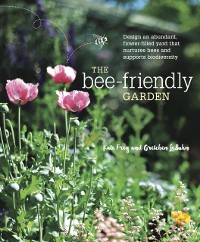Field Guide to the Common Bees of California
Gretchen LeBuhn
* Affiliatelinks/Werbelinks
Links auf reinlesen.de sind sogenannte Affiliate-Links. Wenn du auf so einen Affiliate-Link klickst und über diesen Link einkaufst, bekommt reinlesen.de von dem betreffenden Online-Shop oder Anbieter eine Provision. Für dich verändert sich der Preis nicht.
University of California Press 
Ratgeber / Natur
Beschreibung
This engaging and easy-to-use natural history guidebook provides a thorough overview of native and honey bee biology and offers tools for identifying the most common bees of California and the Western United States. Full-color illustrations introduce readers to more than 30 genera of native bees, noting each one's needs and habits and placing them in their wider context. The author highlights bees’ ties to our own lives, the food we eat, and the habitat we provide, and suggests ways to support bees in our own backyards.
In addition to helping readers understand and distinguish among major groups of bees, this guide reveals how bees are an essential part of healthy ecosystem and how many plants, including important crop plants, depend on the pollination they provide. As growing evidence points to declining bee populations, this book offers critical information about the bond between plants and pollinators, and between humans and nature. Thoroughly researched and full of new insights into the ancient process of pollination,
Field Guide to the Common Bees of California; Including Bees of the Western United States is invaluable for the window it opens onto the biodiversity, adaptive range, and complexity of invertebrate communities.
Kundenbewertungen
backyard biology, natural history, common bees, easy to use, full color illustrations, biodiversity, conservation, bug books, engaging, life sciences, insects, ecology, declining bee populations, pollination, invertebrate animals, nature, honey bee biology, united states, entomology, identification charts, healthy ecosystem, zoology, california, natural habitats, natural history guidebook, antennae, field guide, adaptive range, native bees


























